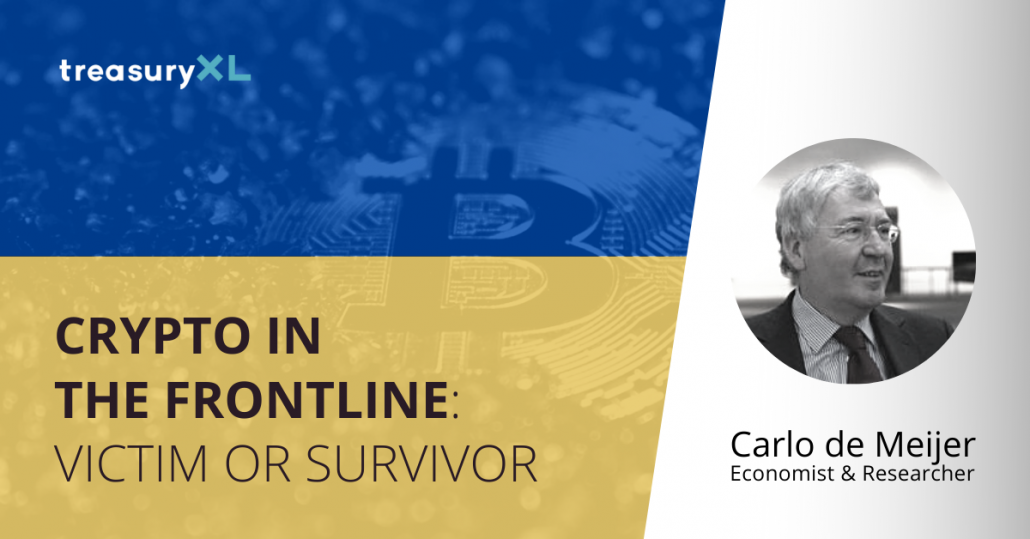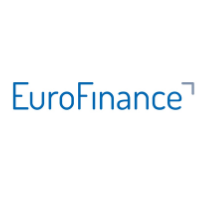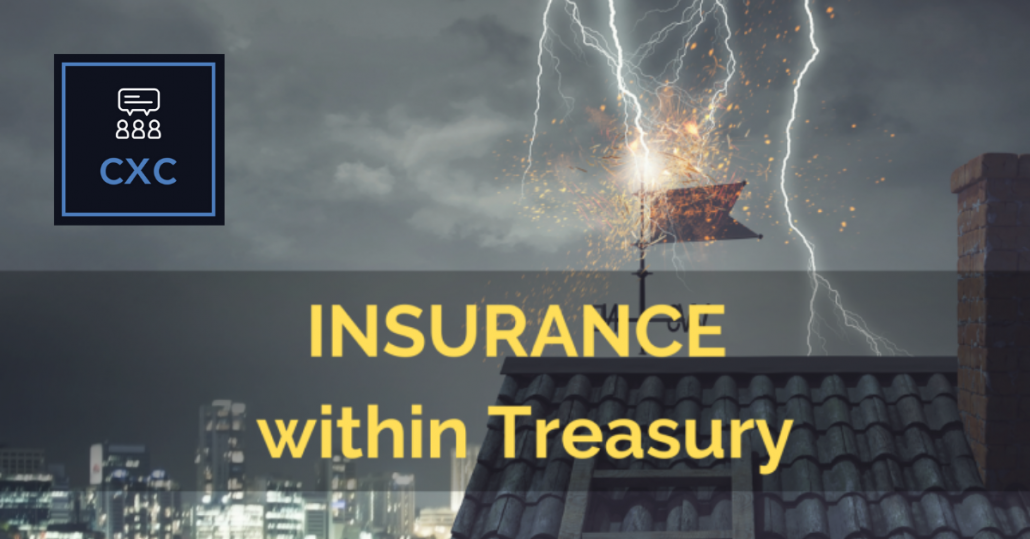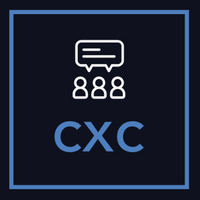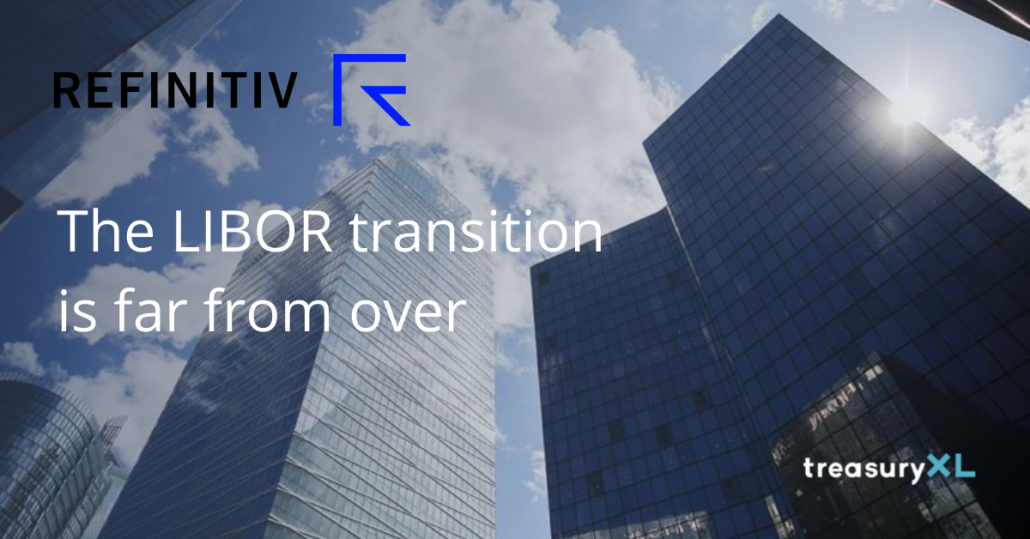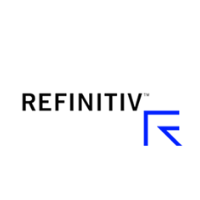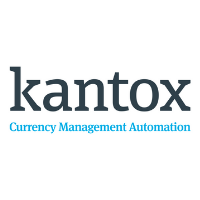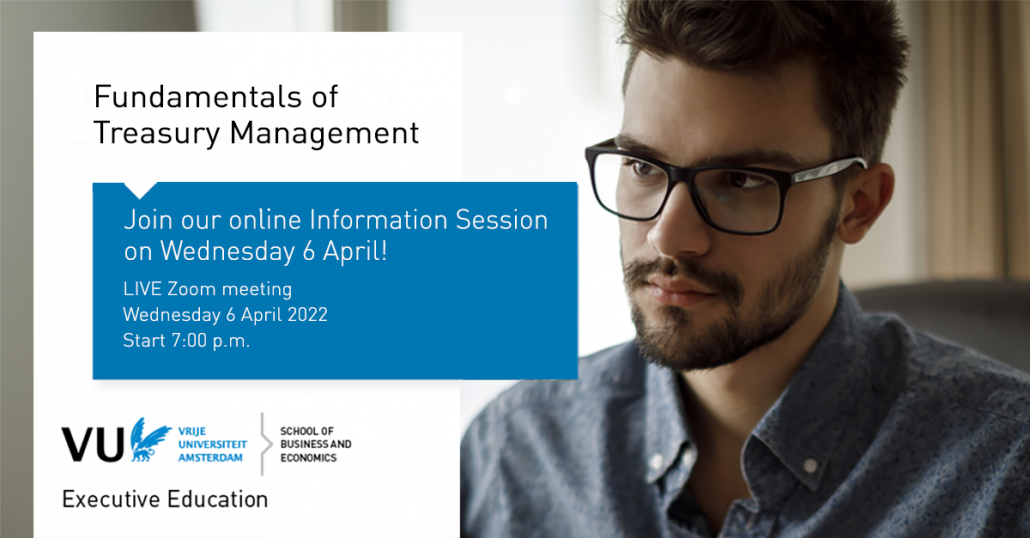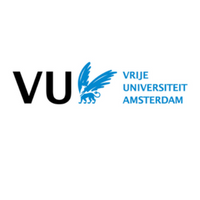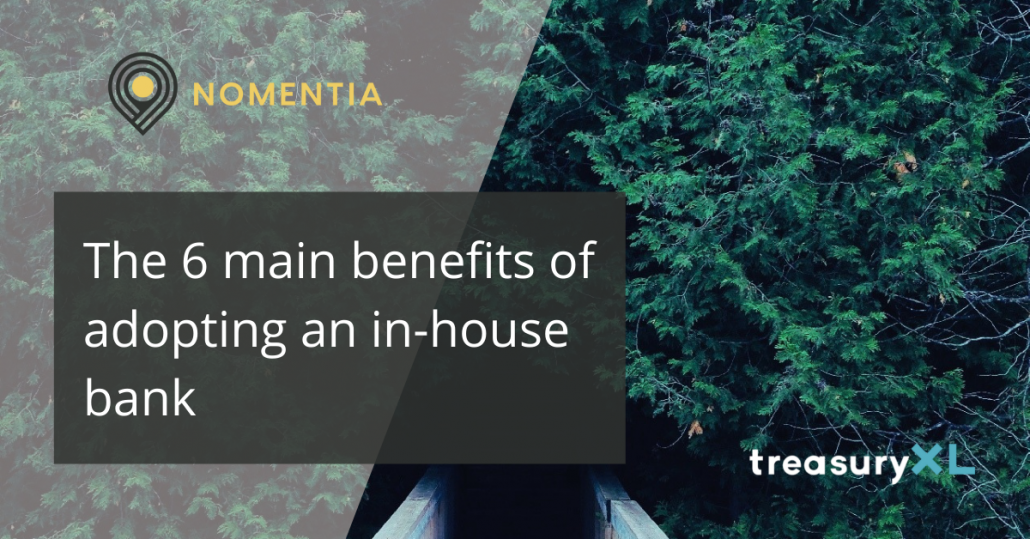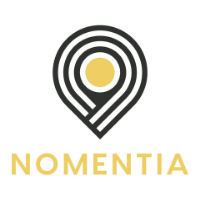The war of Russia versus its neighbour Ukraine has triggered many countries from the West to impose severe sanctions, mainly aimed at hurting the oligarchs around president Putin. They are trying various ways to evade these sanctions as much as possible. Western countries led by the US now also have put crypto on the sanction list, as there are increased signals that oligarchs moved to cryptocurrencies to hide their assets. This however raises a number of questions such as: in what size are cryptos being used, what is the effectiveness of crypto sanctions and what are the limitations of using crypto to circumvent these. But above all will crypto become a victim or a survivor in the end.
Western allies: sanctions
The U.S. and its allies including the EU, UK and Canada have imposed heavy sanctions on Russia’s financial infrastructure, and against the wealthy elites close to president Putin, known as oligarchs, their banks and financial intermediaries, thereby trying to block the pass-through of their assets.
Western governments have frozen Russia’s reserves in the West and ousted Russia from the SWIFT banking system, while banks are resisting deposits and transfer requests and ramped up compliance checks for fear of contravening sanctions. A number of countries have also seized some oligarchs’ assets by law enforcement as part of the sanctions including yachts, private jets, real estate and/or financial assets. Next to that foreigners are not allowed to sell their domestic securities in Russia, while on the other hand local exporters are being urged to liquidate a vast portion of their foreign currency holdings.
Impact of sanctions on the Russian economy
These sanctions are mainly aimed to hit Putin and the group of billionaire oligarchs who support him, it is hurting the entire Russian economy. The Institute of International Finance estimates that the Russian economy will shrink by 15% this year, instead of the 3% growth that was expected pre-invasion.
Russia lost access to vital imports for its military gear and more than $600 billion in assets held by its central bank. The country also faces ongoing rounds of targeted sanctions against companies and the wealthy elite, which have already lost more than $38 bn up till now.
The measures have crippled the banking sector and financial system, whereas the Russian stock market has yet to reopen since the sanctions began. Rating agencies are prompted to downgrade the country’s debt and warned Russia would likely default if it used Rubbles to repay dollar-denominated debt .
As a reaction, the Rubble initially collapsed, but returned to its pre-war level thanks to income from Western gas deliveries. There are however still concerns that the inflation rate would further rise. In order to stop this, the central bank of Russia has increased its benchmark rate to 20%.
Crypto is taken a crucial role in the Russian-Ukraine war
As cryptocurrency is now a more mainstream part of the global financial system, it has been inevitable that it became a part of this international conflict as a key tool in this war. Some even called Russia’s invasion of Ukraine “the world’s firts crypto war.”
Cryptocurrencies have thereby taken opposite roles: it has become a tool of Ukrainian resistance, being sent as donations to help the government in Ukraine; it also provided a lifeline for some fleeing Ukrainians whose banks are inaccessible; at the same time, it is being used by Russian oligarchs to evade sanctions, but also by normal Russian citizens as a flight to safety.
Ukraine: donations to finance the war
It is not that strange Ukraine is using crypto during the conflict. Not only is Ukraine one of the most cyber-literate countries in the world, it has also been one of the most open to exploring the use of cryptocurrency in the past few years.
The Ukrainian government itself is urgently asking for donations in crypto to finance the country’s defence against Russia. More than$100 million worth of crypto has been sent to support Ukrainians over the past several weeks. The Ukrainian government has already spent at least $20 million of the crypto it has received. Because the country’s officials can’t make all the purchases they want using crypto, they sometimes convert some of these donations back into fiat currency to buy supplies.
The government has also launched a website to centralize its crypto-based fundraising efforts, but it is also open to fiat currency donations. This new website explains that Ukraine is indeed accepting several cryptocurrencies, including Bitcoin and the meme-inspired Dogecoin, to support its fight against Russia. Ukraine also plans to issue NFTs (non-fungible digital tokens) to support the war against Russia.
Russia: evade sanctions and flight to safety
The use of Bitcoin in Russia has accelerated since the beginning of their offensive against Ukraine. While ordinary citizens see it as a way to maintain their buying power, the elites may be using it to circumvent sanctions thereby hiding their assets in cryptocurrency. Crypto’s thereby offers a flight route that would otherwise not exist.
Evade sanctions by oligarchs
Russia is the third-largest Bitcoin mining nation in the world. So, the fact that cryptocurrencies could be used by oligarchs that are hit by the Western sanctions as a vehicle to evade these has been a concern
In some ways, using cryptocurrencies would make sense for Russia, existing in a closed system being not regulated by central banks. Not only do they facilitate peer-to-peer and borderless transactions, but they’re also non-confiscatable unless another party knows the holders’ private key.
Flight to safety for normal Russians
The increased use of crypto is however dominated by normal Russians that are looking for a safe haven for their money. The drastic fall of the Russian Rubble showed why ordinary Russians had good reason to buy cryptocurrency, giving a way out of the crisis.
With both the public and private banking sector in Russia increasingly frozen out of international commerce and access to foreign currencies blocked, Russian citizens have been scurrying to convert roubles into cryptocurrency to help preserve wealth.
Elliptic: Real crypto activity in Russia
Blockchain security firm Elliptic is actively investigating crypto asset wallets believed to be linked to Russian officials and oligarchs subject to sanctions, while collaborating with government agencies and other organisations. Elliptic has thereby tracked down a crypto wallet, which has ‘significant crypto-asset holdings’, amounting to millions of dollars worth of crypto. The findings come amid a heated debate on whether cryptocurrencies can be used to evade additional sanctions imposed on Russian oligarchs and officials since Russia’s invasion of Ukraine.
The firm has passed on to authorities information on this digital wallet. They have identified several hundred thousand crypto addresses linked to Russia-based sanctioned actors. Elliptic claims it has “directly linked” more than 15 million cryptocurrency addresses to criminal activity with a nexus in Russia. This goes beyond those included in sanctions lists to include other addresses that Elliptic has been able to associate with these actors.
The firm has also identified more than 400 virtual asset service providers (VASPs), mostly exchanges, where cryptocurrencies can be purchased with roubles. Most of these services are unregulated, and can be used anonymously. According to Elliptic, a week before the conflict between Russia and Ukraine broke out, Rubble-related activity on some of these services (like Tornado Cash ) was seen surging. Tornado Cash has declined to restrict services or comply with the sanctions and continues to anonymise transactions in Ethereum.
Western allies: halt crypto escape routes
Politicians and regulators across the West expressed their worries about these crypto escape routes used by Russian oligarchs. In order for the sanctions levied by the Western allies to have the maximum impact they are advocating for more action to close off avenues oligarchs might use to evade. Authorities worldwide are now closely monitoring any efforts to circumvent or violate Russia-related sanctions via the use of digital currencies.
All big crypto market places are urgently asked to block Russian users and cut off of the trade in cryptocurrencies, to ensure that specific sanctioned individuals and organisations from Russia are not using their platforms.
Worldwide banks and intermediaries should report suspicious transactions, and be watchful of Russian oligarchs and governments institutions to evade sanctions through crypto.
US crypto regulation
The US has sped up the launch of US legislation for cryptocurrencies, ‘to close potential avenues for evasion of sanctions against Russia’. Crypto exchanges, wallet hosts and other crypto service providers will be prohibited from engaging in crypto transactions that involve blocked Russians.
This legislation aims to ensure that president Putin and his oligarchs do not use digital assets to undermine the international community’s economic sanctions against Russia for its invasion of Ukraine. It would give the US government the authority to ban US companies from processing cryptocurrency transactions connected to sanctioned Russian accounts. Treasury will be given the authorization to treat these crypto platforms much like the banks are treated: i.e. got to know your customer and not dealing with people who are in violation of sanctions and to block if they are sanctioned.
This Digital Asset Sanctions Compliance Enhancement Act (DASCE) will identify foreign digital asset actors that are facilitating the evasion of sanctions against Russia and authorizing to apply secondary sanctions to foreign cryptocurrency exchanges doing business with sanctioned Russian individuals, companies or government agencies. It would also provide the Treasury Secretary with the authority to prohibit digital asset trading platforms from transacting with cryptocurrency addresses that are known to be in Russia.
US CleptoCapture taskforce
The US Department of Justice announced the creation of a new task force dubbed CleptoCapture, to enforce sanctions on Russian oligarchs. The actions of the new task force will be focused on freezing and seizing their assets.
The task force will also investigate banks, financial firms and cryptocurrency exchanges that have helped oligarchs hide or launder their money, and prosecute those that fail to prevent sanctioned individuals using their services. Their goal is to bring any appropriate charge against any sanctioned Russian oligarch or entity, and those who would help them to evade economic sanctions.
In addition to pursuing charges such as money laundering, sanctions evasion and wire fraud, the task force will trace assets that are tied to federal crimes impacting the U.S. financial system and seek to seize them through civil and criminal forfeitures.
The CleptoCapture task force would consist of professionals in expert control enforcement, asset forfeiture, tax enforcement, overseas evidence gathering, and anti-money laundering. The task force will work with prosecutors, agents and analysts, among others, and will pursue “appropriate charges” and will try to disrupt Russian assets and their facilitators.
In the meantime, the Kleptocapture task force will be exclusively authorized to leverage advanced investigative techniques such as cryptocurrency tracing, foreign intelligence sources, data analytics, and relevant data from financial regulatory agencies and private sector partners.
EU crypto legislation
The EU clarified that its sanctions against Russia and Belarus would also include cryptocurrency transactions. The EU is looking at putting more sanctions on wealthy Russians and recently also Belarus are banned from trading digital assets in the EU. They thereby also include the families of those Russians along with members of the Russian Parliament.
The EU crypto legislation to regulate and control cryptocurrency transactions incl. the movement of Russian capital, already provides for ways for the EU authorities to intervene in cryptocurrency accounts, known as wallets. They can also selectively intervene before the currency conversion takes place. There are companies, including the exchanges, that can mark wallets that have been identified as being related to the Russian government or its collaborators.
G7 REPO taskforce
The G7 is also looking to coordinate on sanctions enforcement so that Russian efforts to evade can be dealt with effectively. They are committing to impose measures to make sure that the economic repercussions are felt by Russia through restrictive measures, to ‘cracking down on evasion and to closing loopholes’.
Representatives from the US, Australia, Canada, Germany, France, Italy, Japan, the United Kingdom, and the European Commission agreed to launch the REPO (short for Russian Elites, Proxies, and Oligarchs) multilateral task force. Agencies in these countries will work together to collect and share information to take concrete actions, including sanctions, asset freezing, civil and criminal asset seizure, and criminal prosecution. The group is now looking into 50 individuals, with 28 names publicly announced.
US CleptoCapture will closely work alongside the REPO task force, to enforce the economic restrictions imposed on Russia. Both groups will use data analytics, cryptocurrency tracing, intelligence, and data from financial regulators to track sanctions evasion, money laundering and other criminal acts. Countries that serve as havens to oligarch’s property will have to cooperate in REPO’s effort, or else sanctions will be less impactful.
Crypto platforms reaction
From the start of the Ukraine war cryptocurrency exchanges around the globe were pressurized to ban transactions with Russia. Aim was to prevent Russian oligarchs from using crypto. The Ukraine vice prime minister Fedorov even asked not only freeze the (crypto) addresses of Russian and Belarus oligarchs and politicians but to even ban normal Russians.
Somewhat expected, initially most of the largest exchanges were not willing to comply with these sanctions and did not really react on calls to block Russians. Binance, Coinbase and Kraken, and other popular digital asset trading platforms said blocking Russian-based entities would be against crypto’s nature and contrary to the reason of existence of crypto.
But mainstream crypto players had to change their stance shortly after. This came after the US and other watchdogs introduced bills to prohibit financial entities from operating with Russian banks and customers. In the meantime most mainstream crypto players have complied with the regulator’s requests saying they will abide the imposed sanctions, and cracked down on transactions originating out of Russia.
They took necessary steps by freezing crypto moneys of specific persons from the direct circle around Putin. And they are already working as per the instruction of conventional financial institutions to collect data on their consumers and recognize suspicious activities. Coinbase disclosed that it had blocked 25,000 accounts supposedly linked to sanctioned Russians, who were suspects of carrying out illegal activity.
They however declined an outright ban on all Russian accounts as was asked by the Ukraine vice-prime minister. These crypto exchanges argue that “banning the entire nation could run counter to Bitcoin’s spirit of offering payments access free from government oversight. It would also be unethical if all Russians would not get entrance to their cryptocurrencies, or could not trade anymore”.
However, there are still more than 400 crypto services in the world that are refusing to shut down access by Russians to their exchange platforms and let anonymous users trade digital assets using Russia’s native currency, the Rubble.
Limited power of crypto to circumvent sanctions
Crypto can and will be used for sanctions evasion. What’s in question is on what kind of scale. Crypto however is not a perfect solution to bypass authorities. It is not proving out realistic that oligarchs can completely circumvent sanctions by moving all their wealth into crypto. Statistics also suggest there is little sign of Russian-based oligarchs moving large sums out of Rubbles and into crypto assets. It also suggest anyone wishing to trade large volumes of Bitcoin against the Rubble will have difficulties.
Crypto “is not the silver bullet.” For that crypto has a number of important limitations.
Crypto is pseudonymous
It turns out to be harder to hide via using crypto than Russian oligarchs might think. Blockchain assets don’t have the best privacy, which, makes large-scale transfers and buys difficult to conduct without being identified. Almost every public blockchain – including Bitcoin’s – is pseudonymous, yet totally comprehensive. All of the largest crypto exchanges are required to collect personally identifiable information from their customers to comply with KYC and AML rules. In order to register on a regulated crypto exchange need to upload a passport and corroborating identification.
No complete anonymity
There is no such thing as complete anonymity on a blockchain. Ultimately, crypto is very easy to track, whether it’s decentralized or centralized. To monitor accounts and transactions, all you need is a wallet address. It is possible to protect a crypto wallet from scrutiny by taking it offline. That typically means using a hardware wallet — also referred to as a cold wallet — that is not constantly connected to a blockchain network. Oligarchs can hide their crypto, but moving it is another matter, especially, especially if they’re moving huge amounts.
Crypto is traceable
No one would be able to convert crypto assets to official currency without properly identifying themselves. If one want to buy cryptocurrencies they must also show/prove the source of those assets.
Once oligarchs try to move funds, the crypto account or wallet, which is typically identified as a series of numbers and letters, is visible to a network. With that wallet one can see how much is in the crypto accounts. Pretty much all transactions can be tracked. Funds can be traced through the blockchain ledger to screen them for links to all known and inferred cryptocurrency addresses controlled by sanctioned actors.
While no ledger address explicitly names who controls it, its entire historic activity is available for all to see. Every transaction that an identified account has with another account is noted and can be traced. The nature of these activities and the volume of transactions taking place with the address is sometimes enough to identify its owner.
Those that have not complied with these rules in the past have faced major legal repercussions. They are also disallowed from facilitating transactions with blacklisted individuals, providing a major roadblock to those groups from cashing out on their crypto.
Low liquidity
The capacity to put large amounts of Rubbles through crypto exchanges operating in Russia is also heavily constrained by the relatively low liquidity in Russian crypto trade. A measure of the liquidity of the Russian Bitcoin exchanges is the value of orders submitted by buyers and sellers at any given time. This is about US$200,000, compared with $US22 million for US-based crypto exchanges – a volume 110 times larger.
Short cuts for oligarchs
Oligarchs however have other methods to secure their belongings and shield their money and assets in creative ways.
There are signals that crypto companies in the United Arab Emirates, Dubai and Qatar were inundated by requests to liquidate billions of dollars of digital currency from Russians who are seeking to protect their wealth. They are thereby cashing out their crypto assets to invest in real estate in these countries.
But it is more likely that most of their capital was already protected earlier than the sanctions have been launched and that their wealth is mostly invested through shell companies in assets in tax havens like Bermuda, British Virgin Island, Isle of Man or Monaco. They often have real estate ownership in relatives’ names or have assets registered in these tax havens.
Most of these oligarchs may also have their fiscal residence in another country, or have groups of companies that operate in different jurisdictions, making it possible to at least partially avoid the new sanctions.
Crypto: victim of war or .…. may it survive?
For now, we don’t know how crypto will shape the international conflict, or whether it will ultimately help or hurt. What we do know is that Bitcoin and other cryptocurrencies are now a real factor in global economies and in conflicts.
But what does that all mean for crypto itself? Crypto nowadays faces another defining moment in its still short history. Whether it’s good or bad in wartime, crypto is doing what its proponents say it does — giving people a way to work outside of traditional financial institutions — and there’s no sign that will change anytime soon
The Ukraine war however will be an interesting test case for the crypto sector at large. There is the risk that the vision for the transformative power of crypto is at risk of being overtaken by greed.
May it become a victim of the war and will that mean the end of crypto …. or may it survive in the longer term. The ultimate goal of crypto is not to fight a war but to be used in a free world and do the things that accomplish meaningful effects in the real world. In terms of:
– bringing the many unbanked people around the world into financial systems
– allowing capital to flow unencumbered across borders
– and providing the infrastructure for entrepreneurs to build all sorts of new products.



